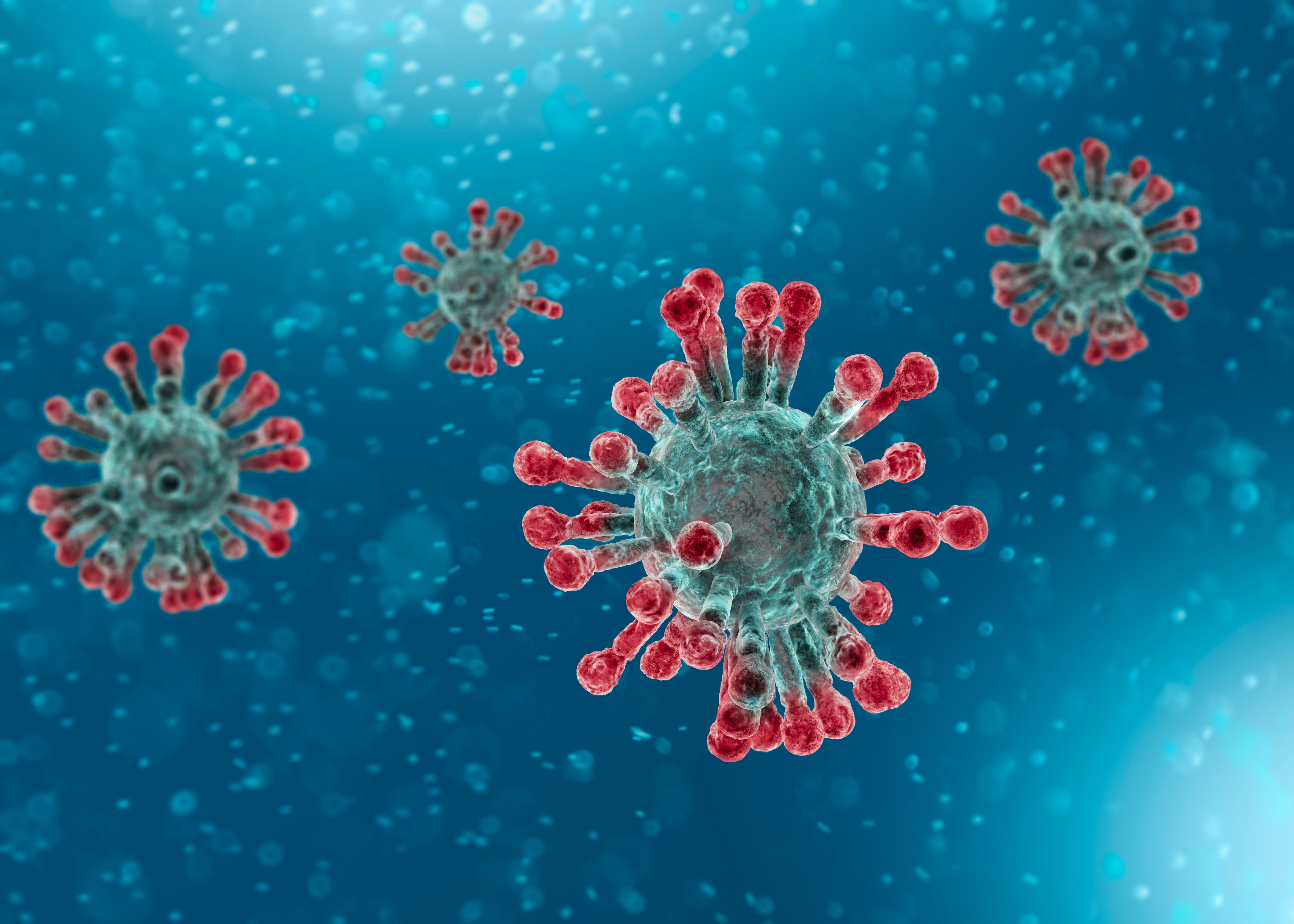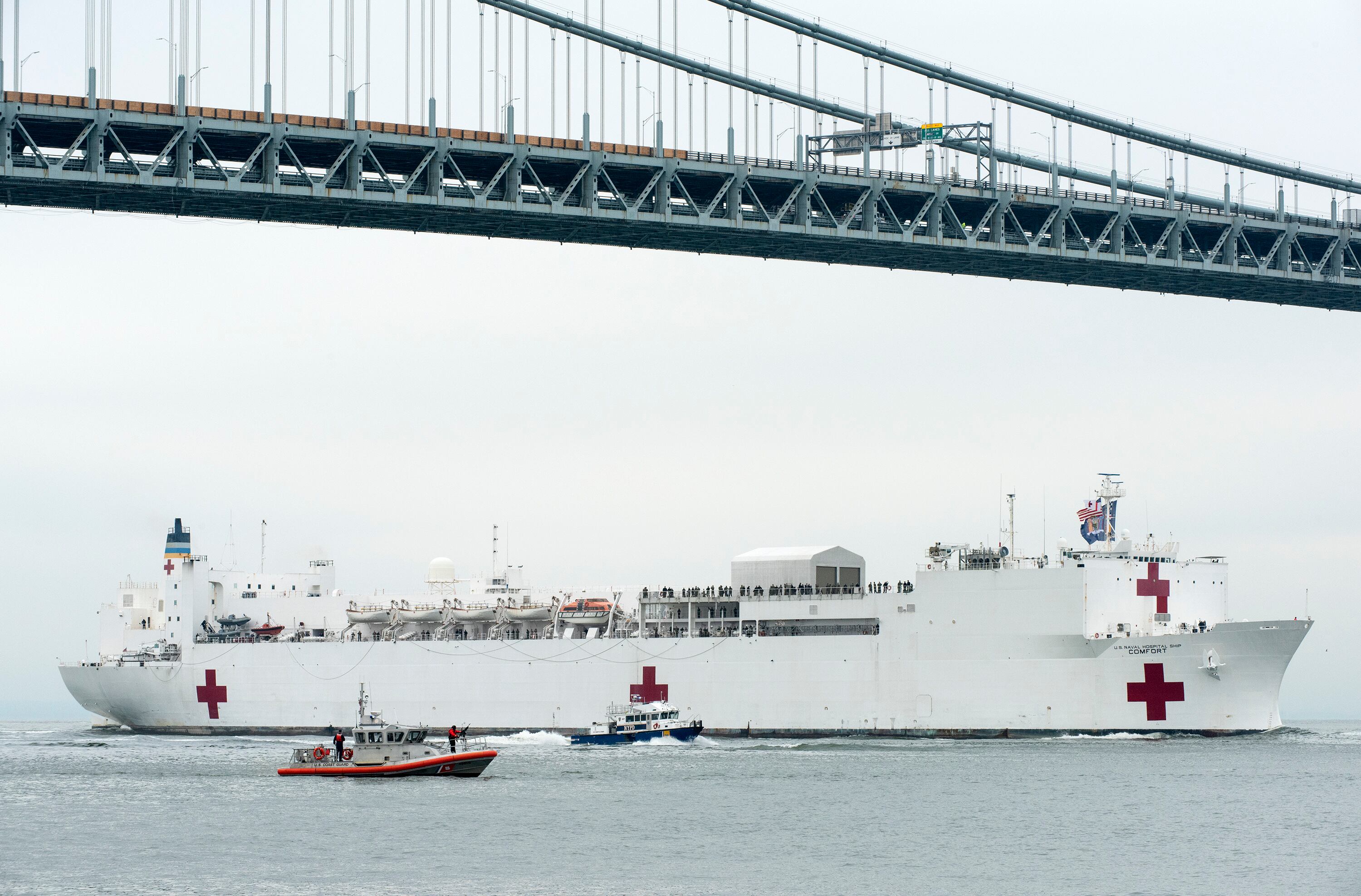Three years ago, scientists at the Pentagon’s future-leaning research branch started work on a program aimed at preventing pandemics.
Now, as scientists at the Defense Advanced Research Projects Agency are halfway through their projected timeline, a pandemic has swept across the globe, with the most reported cases of COVID-19 coming from the United States.
In response, the military organization that typically focuses on projects to address future threats at least five to 10 years off finds itself sprinting to develop diagnostic tools and treatment for the new coronavirus pandemic, and using technology it’s invested in over the last decade.
For example, in the next two weeks, one DARPA program hopes to have developed a test that can detect if a patient is infected with coronavirus and can observe changes in human cells to identify if a patient is infected.
“You live your life thinking this could happen, but when it does happen it’s a bit surreal,” said Amy Jenkins, a program manager in DARPA’s Biological Technologies Office. “Most of us, we haven’t had a chance to really breathe and really think about what’s happening right now because we’ve been trying to prepare for this. But it’s all a bit surreal that it’s actually happening now.”
The early days
COVID-19, the disease caused by coronavirus, came to DARPA’s attention when the epicenter was limited to Wuhan, China.
“This outbreak was very much on our radar in December when we were just getting initial reports from China that there was a novel pneumonia unrelated to influenza occurring,” Jenkins said in an interview with C4ISRNET. “We made the decision as a program to start investigating this once we had the first U.S. case.”
That initial U.S. case was confirmed Jan. 21, but the first sample arrived at DARPA’s partner labs during the first week of March.

In the meantime, however, Jenkins’ office worked with DARPA’s partner labs so scientists could begin testing when the first sample arrived. They also researched the virus’ genetic sequence and how it related to SARS, another respiratory disease caused by a coronavirus that killed about 800 people from 2002-2004. DARPA’s partner labs are AbCellera Biologics, AstraZeneca, Vanderbilt and Duke.
“It wasn’t a necessary pause,” Jenkins said. “If we had had samples the last week of January, we could’ve started immediately.”
Jenkins, along with Brad Ringeisen, office director of DARPA’s Biological Technologies Office, said the biggest challenge the agency has encountered is access to samples.
“It’s frustrating to know that we have the tools and the technology,” Ringeisen said. “But those tools and technology do us no good until we get the samples.”
He added that the office has worked with the National Institutes of Health, the Department of Health and Human Services, the Defense Department, and several other entities to get the samples it needs for rapid research.
Past investment, present payoffs
Since the early 2010s, DARPA has invested in a new type of vaccine technology — nucleic acid vaccines — which use the human body as its “bioreactor” to create the antibodies needed for immunity. DARPA funded this type of vaccine because traditional vaccine manufacturing is cumbersome, Jenkins said, and can take up to 18 months.
DARPA’s efforts on new mRNA vaccines have perhaps led to the best chance of effective immunization against COVID-19. This is in part thanks to a $25 million grant it awarded in 2013 to biotech company Moderna to manufacture mRNA vaccines to protect against a “wide range of known and unknown emerging infectious diseases and engineered biological threats."
Now, a Moderna mRNA vaccine for COVID-19 is undergoing a clinical trial with the NIH. DARPA leaders are confident it will be deemed safe “because of some of our past investments that we’ve done on similar products for different diseases,” Ringeisen said.
Because there’s no RNA immunization for COVID-19 approved by the Food and Drug Administration, Jenkins said that DARPA has also realigned its efforts to work on traditional vaccine manufacturing.
“It’s not the role DARPA has been investing in, but it is the most applicable to this outbreak,” Jenkins said.
In 2018, DARPA signed the first contracts for the Pandemic Prevention Platform (P3) program, a project that aims to create a “medical countermeasure” for a pandemic disease within 60 days of that pathogen’s identification using the mRNA vaccine technology.

The platform relies on ongoing research into rapid antibody-discovery technology that must be linked with tech able to quickly manufacture those antibodies. The rapid antibody-discovery technologies are “hardened off,” Jenkins said, meaning that their focus is now on manufacturing the antibodies, a process that can be done in the human body, as described earlier.
“Given this outbreak, what we are doing now is actually utilizing those rapid discovery platforms to find … antibodies that target the SARS-2 coronavirus,” Jenkins said.
The P3 program is expected to be completed in 2022 or 2023, Jenkins said.
DARPA’s coronavirus effort also includes creating a rapid detection and diagnostic platform through its Epigenetic CHaracterization and Observation, or ECHO program. According to Ringeisen, DARPA hypothesized years ago that infectious diseases left "epigenetic marks” on human cells, or chemical changes in cells that indicate exposure to toxins, much like epigenetic marks left in smokers. In this test, medical professionals wouldn’t be looking for the virus, but rather for the marks indicating the host’s response to the virus.
“These marks are most likely being made almost immediately after the body is exposed to the virus,” Ringeisen said. In addition, they could show up well before the virus would be evident in a nasal swab.
In this case, blood would be drawn and then scientists could look for the marks. DARPA was able to focus the ECHO program to respond to the new coronavirus, Ringeisen said.
Ringeisen told C4ISRNET that he thought that test could be a “powerful tool,” especially as “we talk about going back to the workforce and who might be more vulnerable or less vulnerable to being exposed to the disease.” He hopes this program will produce the epigenetic signature in the next 10-12 days.
Ringeisen said DARPA is targeting August 2020 as its goal for getting the FDA’s approval of that test. The test would be an important service in case there’s a second wave of the virus in the fall this year.
Another diagnostic test, called Detect It with Gene Editing Technologies, which used computers and algorithms to identify genetic codes, was able to uncover specific genetic codes associated with the new coronavirus. An FDA-approved version of that test could also improve testing for the virus. Ringeisen said that DARPA was able to fast-track that project as well, and the agency is aiming for FDA approval in August.
The investments in these programs over the last decades has accelerated DARPA’s near-term work on the current pandemic.
“By having these projects already going, it’s very, very easy for us to sort of plug in pathogen ‘X’ into these projects,” Ringeisen said.
But to do more research, scientists across the United States are urging people who have recovered from the virus to donate blood so more samples become available.
“As a U.S. government, we have a dearth of samples,” Jenkins said. “We do not have all of the samples we need, but it is not as extreme as a bottleneck at this point.”
Update: This story has been updated with clarification from a DARPA spokesperson that the first test samples arrived at DARPA’s P3 partner labs, not directly to DARPA. The spokesperson also clarified that DARPA’s partner labs prepared their labs for the arrival of the samples, not DARPA, which doesn’t have labs.
Andrew Eversden covers all things defense technology for C4ISRNET. He previously reported on federal IT and cybersecurity for Federal Times and Fifth Domain, and worked as a congressional reporting fellow for the Texas Tribune. He was also a Washington intern for the Durango Herald. Andrew is a graduate of American University.








